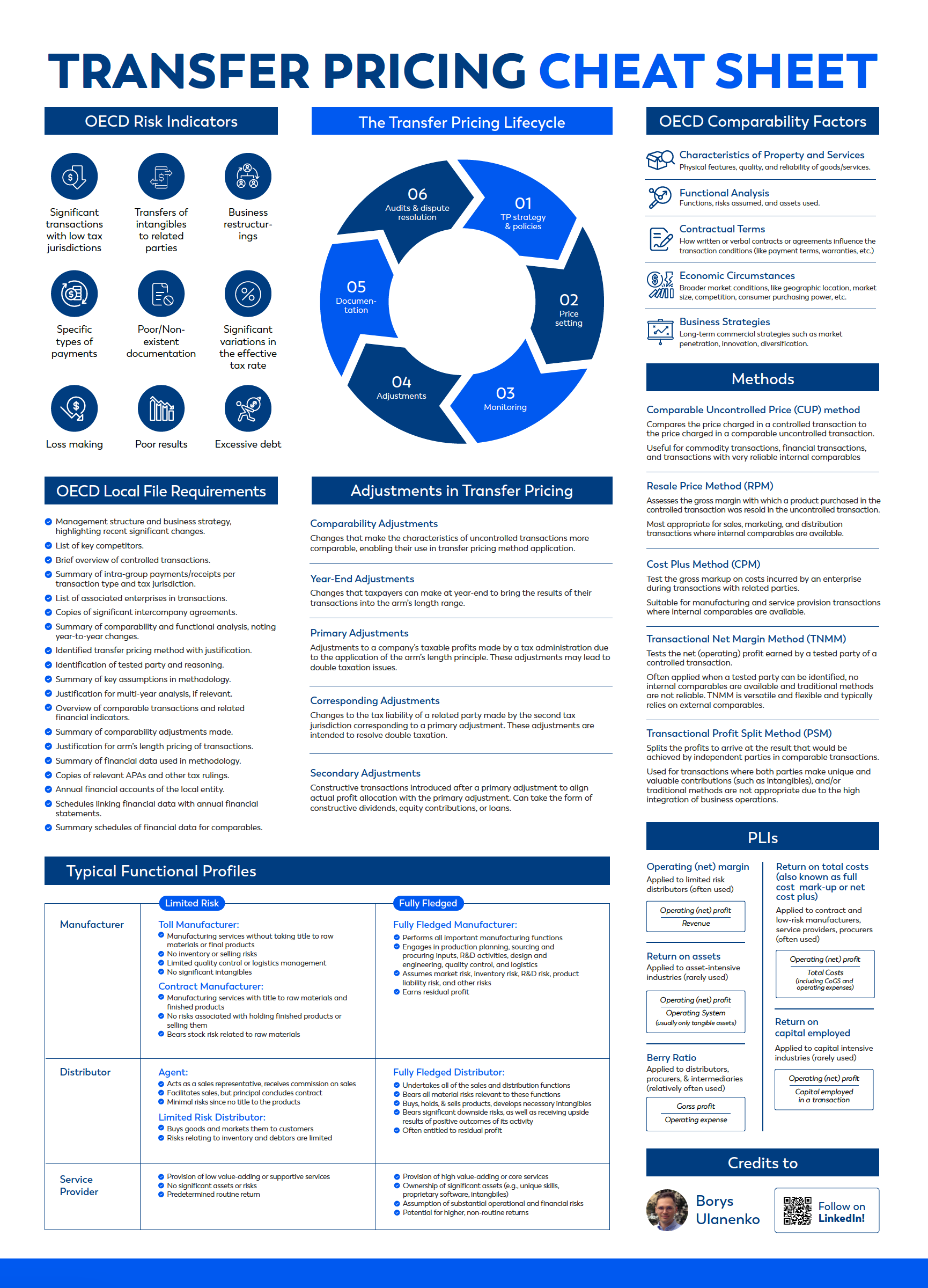How to prepare for the ADIT exam?
About the exam
Transfer pricing
module (3.03)
- Part A includes two mandatory questions worth 25 marks each. Usually, these are typical case studies that will usually require you to identify and delineate controlled transactions, do the functional analysis, analyze and suggest transfer pricing methods, and to identify potential tax and transfer pricing issues. These are the most important questions of the exam, as they contribute 50% to your mark, and that is why we practice a lot of similar cases in the StarTax Transfer Pricing Course.
- Part B consists of two questions, and you need to choose and answer one of them. This part is worth 20 marks and it is usually very similar to Part A in terms of questions (but you have more flexibility).
- Part C is often the easiest one, as it gives you an option of choosing two questions (out of five), and the questions are more “theoretical”. To answer these questions, you need to know general principles and be familiar with the OECD Guidelines.
What are my chances of passing the ADIT transfer pricing exam?
Your background
The ADIT does not have any specific minimum requirements to enroll. However, it is obviously easier to pass the exam if you have some background. If you have no experience with international tax and transfer pricing, you may need to spend much more time preparing compared to someone who already worked in transfer pricing for even a year or two.
How you study
Usually, students are studying for ADIT exams while working. This allows continuing career and applying newly gained skills and knowledge in practice. However, there are downsides, as you will have to balance a full-time workload with studying. Therefore, being flexible and adjusting your approach is essential. If you are studying and working full-time, it is important to have the best materials and courses available to you, as you want to receive the highest return on time invested.
Commitment
If you compare the ADIT qualification with accounting programs like ACCA or CIMA, there are clear benefits – you do not have to pass numerous exams to get a full qualification, and you can always pass one Transfer Pricing module and receive a standalone certificate. However, the ADIT transfer pricing material is difficult, especially if you have limited previous tax exposure. You need to put enough time, effort, and energy into studying to pass the exam, and you need to do this consistently.
Materials that you use
The better materials and resources you have, the easier it will be to prepare and pass the exam. If you only use the OECD Guidelines and the UN Manual, you may need up to spend 200% more time to understand and remember the essential transfer pricing concepts and ideas. And unfortunately, these materials do not give you much in terms of practical skills and applying these concepts in real life. That is why, in our transfer pricing course, we spend a lot of time talking through practical examples, solving cases, and discussing methodologies applicable in real life. We strongly believe that the level of complexity should increase gradually – and our course lectures and the textbook help building a solid foundation for understanding the OECD Guidelines.
What should I do to prepare for the ADIT exam?

There are several vital
steps that every ADIT student should make:
1. Familiarize with syllabus, structure, and past papers
Studying the syllabus of ADIT exams would help you to focus on the topics that are included. You should cover the entire range of topics given in the syllabus. It would be best if you also familiarize yourself with the exam structure early in the preparation and know how exam questions will look like. Also, review suggested answers and candidate scripts – they will give you a feeling about what is expected.
2. Plan
Before you start your preparation, take some time to decide how you plan to prepare yourself for the examinations. When planning, consider the amount of time you have to prepare for the exam, your work routine, family commitments, and other things. Try to draft a plan based on the exam date and number of hours you will have to spend.
When forming your plan, try to be flexible and realistic. The most important thing is to actually draft one since a written timetable is more likely to secure your commitment and motivation early in the exam session than one that only exists in your mind.
According to the ADIT website, many students spend an average study time of approximately 140 hours for the Principles of International Taxation module, with an average of approximately 200 hours for each option module (including the Transfer Pricing module). If you have good materials, this time can be reduced. However, it will still be significant.
3. Learn
When actually learning, set an achievable target for each day. Always try to understand the underlying concepts behind a topic. Note that in the ADIT exam, the most number of marks are given for the application of transfer pricing concepts in a given scenario.
4. Practice
You need to start practicing solving cases and answering questions as early as possible. Unfortunately, there are not many practical cases and examples available openly, therefore, you can try to use past papers and solve them under exam conditions to improve time management, concept-building, and stress management during the exam. In our course, we focus on practicing case studies, and we have mock exam as well.
5. Repeat and revise
The key success factor is not just to learn the material, but also remember it and be able to recall different concepts quickly. You need to have a complete set of notes and summaries of key topics, and you need to revise them consistently throughout your preparation. Revision before the exam is even more critical – try to go through all topics once again quickly at least two weeks before the exam, and identify areas where you don’t feel comfortable.
To check how our ADIT preparation course for transfer pricing looks like, sign up for a free module on intra-group transactions, and download a free sample chapter on comparability analysis overview.
We also recommend two courses on Coursera:
Learning How to Learn course by Dr. Barbara Oakley and Dr. Terrence Sejnowski will give you invaluable learning techniques used by professionals in different fields. This course can significantly increase the effectiveness of learning.

Featured links
Get your free TP cheat sheet!

